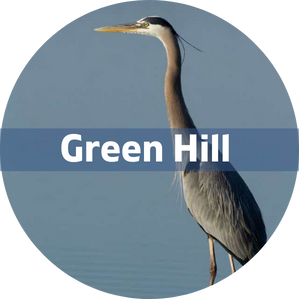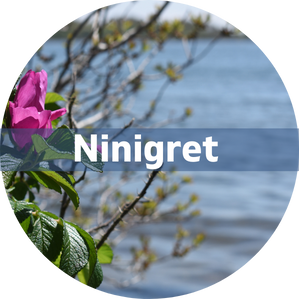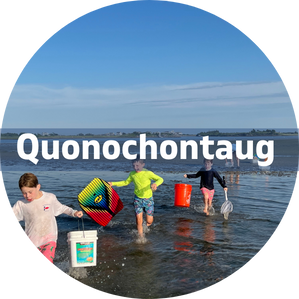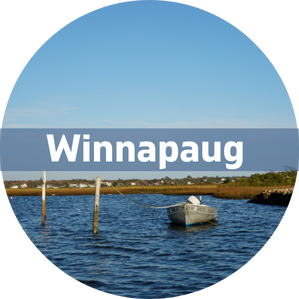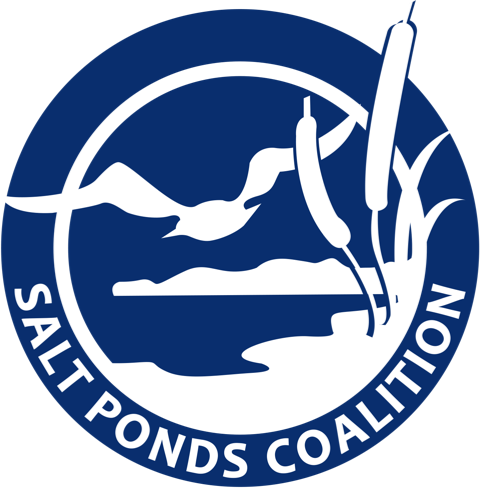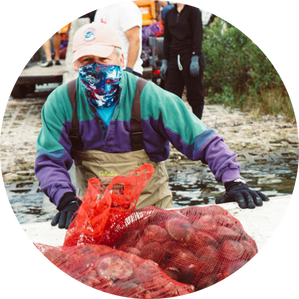Potter Pond
A Glacial Marvel
Potter Pond was once known as “Fish Pond” because of its highly productive fisheries. The entire pond is located in the Town of South Kingstown. Point Judith and Potter are connected via a tidal channel; Potter Pond has no direct connection to the ocean. Pollution problems present in Point Judith Pond can be carried in on the flood tide and impact Potter.
Potter Pond originally had a direct connection to the ocean in the East Matunuck Beach area, but in the early 1900s it began to fill in and became difficult to maintain. The same issue was occurring in Point Judith Pond, so a permanently hardened breachway was established in Point Judith in 1909, but not in Potter Pond. Marsh areas between Potter and Point Judith Ponds were partially filled in with dredge materials when the Harbor of Refuge was created; however, a channel connecting the two ponds remained intact.
With a few exceptions like the Snug Harbor and Matunuck neighborhoods, most of the land around Potter is sparsely developed and maintains a sense of open space and serenity. Potter Pond is home to a well-known 7-acre oyster farm that supplies the Matunuck Oyster Bar restaurant. On the southern border is located the highly popular Matunuck State Beach.
Potter Pond is a coastal lagoon that is brackish in nature. Attached to Potter on the north end is Fresh Pond, a source of fresh water and an anadromous fish run. It has a number of healthy eelgrass beds. One unique feature in the northern area of Potter is its glacial “kettle hole” about 30 feet deep. Low oxygen conditions develop naturally in bottom water as less dense freshwater seeps in and seal off the deeper saltier water in the hole. As a result, circulation is restricted and oxygen is lost as the water gets warmer and plant and animal matter metabolizes. The southern end of the pond has sandflats made possible by wash-over from the barrier beach during hurricanes. This creates ideal conditions for recreational clamming.
Water Quality
Since 1985, the Salt Ponds Coalition has tested the water quality of each of the six salt ponds from May through October. We have over 25 sites and more than 30 volunteers. We test for a variety of things including bacteria, nutrients, salinity, temperature, concentration of chlorophyll-A, and dissolved oxygen.
Fair +
Fair -
Poor
Explore Potter Pond
Potter Pond Stewards
Volunteer today to be a steward of Potter Pond.
Fun Facts about Potter Pond
Fact 1:
acres
Fact 2:
water quality test sites
Fact 3:
feet
Quick Links
Education Programs
We offer educational programming for people of all ages including field studies for schools and camps. Contact our offices to request an educational program for your organization.
View Newsletter
Become a member to stay informed on salt pond news. You'll receive emails during the year, and three times a year we'll mail you the Tidal Pages Newsletter.
Volunteer
Salt Ponds Coalition has exciting volunteer opportunities, with something for everyone. You can serve on a committee, become a pond watcher, or volunteer at an event or program!
Explore Rhode Island Salt Ponds


